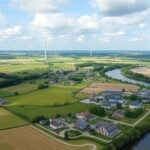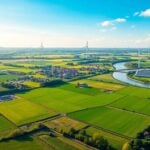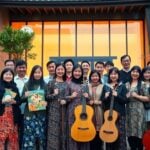Navigating the grant application process can often feel like traversing a labyrinth, filled with intricate pathways and potential pitfalls. At its core, the process involves several key stages, each requiring careful attention and strategic planning. Initially, applicants must identify the funding sources that align with their project goals.
This involves extensive research into various grant-making organizations, including government agencies, private foundations, and non-profit entities. Each of these organizations has its own set of priorities, eligibility criteria, and application procedures. Understanding these nuances is crucial, as a misstep in this early phase can lead to wasted time and effort on proposals that are unlikely to succeed.
Once potential funding sources have been identified, the next step is to familiarize oneself with the specific requirements of each grant application. This includes understanding deadlines, required documentation, and any particular formats or guidelines that must be adhered to. Many grant-making organizations provide detailed instructions on their websites, which can serve as invaluable resources for applicants.
Additionally, it is often beneficial to reach out to program officers or grant administrators for clarification on any ambiguous points. Building a rapport with these individuals can not only provide insights into the application process but may also enhance the chances of success by demonstrating a genuine interest in the funding organization’s mission.
Key Takeaways
- Understanding the Grant Application Process
- Familiarize yourself with the grant application guidelines and requirements.
- Take note of important deadlines and submission procedures.
- Seek clarification from the grant provider if you have any questions about the application process.
- Identifying the Right Grant for Your Environmental Project
- Research and identify grants that align with the goals and objectives of your environmental project.
- Consider the eligibility criteria and funding priorities of potential grant opportunities.
- Look for grants that specifically support environmental conservation and sustainability initiatives.
- Crafting a Compelling Project Proposal
- Clearly articulate the problem or issue your environmental project aims to address.
- Outline the goals, objectives, and expected outcomes of your project in a concise and compelling manner.
- Highlight the innovative and impactful aspects of your project to capture the attention of grant reviewers.
- Budgeting and Financial Planning for Your Grant Application
- Develop a detailed and realistic budget that accurately reflects the costs associated with your environmental project.
- Justify the budget items and expenses included in your grant application.
- Consider potential sources of matching funds or in-kind contributions to strengthen your financial planning.
- Demonstrating the Impact of Your Environmental Project
- Clearly define the metrics and indicators that will be used to measure the impact and success of your project.
- Provide evidence of community engagement, stakeholder involvement, and partnerships to demonstrate the potential impact of your project.
- Use case studies, testimonials, and success stories to illustrate the positive outcomes of similar environmental projects.
- Tips for Writing a Successful Grant Application
- Tailor your grant application to the specific requirements and priorities of each grant opportunity.
- Use clear and concise language to communicate your project’s objectives, activities, and expected outcomes.
- Seek feedback from peers, mentors, or grant writing professionals to improve the quality of your grant application.
Identifying the Right Grant for Your Environmental Project
Understanding the Environmental Funding Landscape
Selecting the right grant for an environmental project is crucial for its success. The environmental funding landscape is vast and varied, encompassing local initiatives for community sustainability to large-scale conservation efforts. To identify the right grant, project leaders must first clearly define their specific goals and objectives.
Aligning Project Goals with Grant Opportunities
This clarity will guide project leaders in seeking out grants that align with their mission and resonate with the priorities of potential funders. For example, a project focused on urban green spaces may find more success with grants aimed at enhancing community resilience and biodiversity than those focused solely on climate change mitigation. It is also essential to consider the geographic focus of the grant opportunities available.
Considering Geographic and Thematic Priorities
Many funding organizations prioritize projects that address local or regional environmental issues, which means that applicants should seek grants that are specifically tailored to their area of operation. This localized approach not only increases the likelihood of securing funding but also ensures that the project addresses pressing environmental challenges within the community. Additionally, applicants should be aware of any thematic priorities set by funders, such as renewable energy, waste reduction, or habitat restoration.
Enhancing Appeal to Potential Funders
By aligning their project with these themes, applicants can enhance their appeal to potential funders and demonstrate a commitment to addressing critical environmental issues.
Crafting a Compelling Project Proposal

A well-crafted project proposal serves as the cornerstone of any successful grant application. It is not merely a document outlining the project; rather, it is a persuasive narrative that communicates the significance of the initiative and its potential impact on the environment and community. To create a compelling proposal, applicants must begin by clearly defining their project’s objectives and expected outcomes.
This clarity will help reviewers understand the project’s purpose and its alignment with the funder’s mission. Furthermore, incorporating data and evidence to support claims about the project’s necessity can bolster its credibility and appeal. In addition to outlining objectives, a successful proposal should also include a detailed plan for implementation.
This plan should address key components such as timelines, methodologies, and roles of team members involved in the project. By providing a comprehensive overview of how the project will be executed, applicants can instill confidence in reviewers regarding their ability to deliver results. Additionally, storytelling can be an effective tool in proposal writing; weaving in personal anecdotes or case studies can illustrate the project’s relevance and urgency.
Ultimately, a compelling project proposal not only informs but also inspires, making a strong case for why funding is essential for its success.
Budgeting and Financial Planning for Your Grant Application
Budgeting is often regarded as one of the most challenging aspects of preparing a grant application, yet it is also one of the most critical components. A well-structured budget provides a clear financial roadmap for how grant funds will be utilized throughout the project’s lifecycle. It should include detailed line items for all anticipated expenses, such as personnel costs, materials, equipment, travel, and indirect costs.
Each item should be justified with explanations that demonstrate its necessity for achieving project goals. This level of detail not only helps funders understand how their money will be spent but also reflects an applicant’s commitment to transparency and accountability. Moreover, financial planning extends beyond merely creating a budget; it also involves considering potential sources of matching funds or in-kind contributions that can enhance the project’s viability.
Many grant-making organizations favor projects that leverage additional resources, as this demonstrates community support and sustainability. Therefore, applicants should explore partnerships with local businesses, government agencies, or other non-profits that may be willing to contribute resources or expertise. By presenting a comprehensive financial plan that includes both requested funds and additional support, applicants can strengthen their case for funding while showcasing their project’s broader impact on the community.
Demonstrating the Impact of Your Environmental Project
One of the most compelling aspects of any grant application is the ability to demonstrate the anticipated impact of an environmental project. Funders are increasingly looking for evidence-based outcomes that illustrate how their investment will lead to tangible benefits for both the environment and society at large. To effectively convey this impact, applicants should establish clear metrics for success that align with their project objectives.
These metrics could include quantitative measures such as reductions in carbon emissions or increases in biodiversity, as well as qualitative assessments like community engagement or educational outreach. In addition to defining metrics, it is essential to articulate a robust evaluation plan that outlines how these outcomes will be measured throughout the project’s duration. This plan should detail methodologies for data collection and analysis, as well as timelines for reporting results to funders.
By demonstrating a commitment to ongoing evaluation and adaptation based on findings, applicants can reassure funders that they are dedicated to maximizing their project’s effectiveness. Ultimately, showcasing both anticipated impacts and a thoughtful evaluation strategy can significantly enhance an application’s appeal by illustrating a clear pathway toward meaningful environmental change.
Tips for Writing a Successful Grant Application

Understanding the Funders’ Expectations
Writing a successful grant application requires attention to detail and an understanding of what funders are looking for in potential projects. A key tip is to carefully read and follow all application guidelines provided by the funding organization. This includes adhering to formatting requirements, word limits, and submission protocols.
The Importance of Adhering to Guidelines
Failing to comply with these guidelines can result in disqualification or rejection of an otherwise strong proposal. Therefore, taking the time to ensure that every aspect of the application meets the specified criteria is essential for success.
Collaboration and Feedback
Another important strategy is to engage stakeholders early in the process. Collaborating with community members, experts in relevant fields, or other organizations can provide valuable insights that enhance both the proposal’s content and its credibility. Additionally, seeking feedback from peers or mentors who have experience with grant writing can help identify areas for improvement before submission.
Polishing the Application
Finally, allowing ample time for revisions is crucial; a polished application that has undergone multiple rounds of editing will stand out far more than one hastily completed just before the deadline. By employing these strategies and maintaining a clear focus on the project’s goals and impacts, applicants can significantly increase their chances of securing funding for their environmental initiatives.
If you are looking for guidance on how to write a grant application for environmental projects, you might also be interested in exploring specific funding opportunities that align with your project’s focus on sustainability and environmental conservation. A relevant resource to consider is the call for projects on water resource management, which can provide financial support for initiatives aimed at preserving and managing water resources effectively. For more details on this funding opportunity and how to apply, you can visit the following link: Call for Projects on Water Resource Management. This could be a valuable opportunity to secure funding for your environmental project.
FAQs
What is a grant application for environmental projects?
A grant application for environmental projects is a formal request for funding to support initiatives that aim to address environmental issues, such as conservation, sustainability, and pollution reduction.
What are the key components of a grant application for environmental projects?
Key components of a grant application for environmental projects typically include a project description, budget, timeline, goals and objectives, evaluation plan, and a sustainability plan.
What are some tips for writing a successful grant application for environmental projects?
Some tips for writing a successful grant application for environmental projects include clearly articulating the problem or need, demonstrating the project’s potential impact, aligning with the funder’s priorities, and providing a detailed and realistic budget.
What are some common mistakes to avoid when writing a grant application for environmental projects?
Common mistakes to avoid when writing a grant application for environmental projects include submitting a generic proposal, failing to clearly communicate the project’s goals and objectives, and not following the funder’s guidelines and requirements.
Where can I find resources and support for writing a grant application for environmental projects?
Resources and support for writing a grant application for environmental projects can be found through government agencies, non-profit organizations, and online grant writing resources. Additionally, seeking guidance from experienced grant writers or environmental professionals can be beneficial.


























